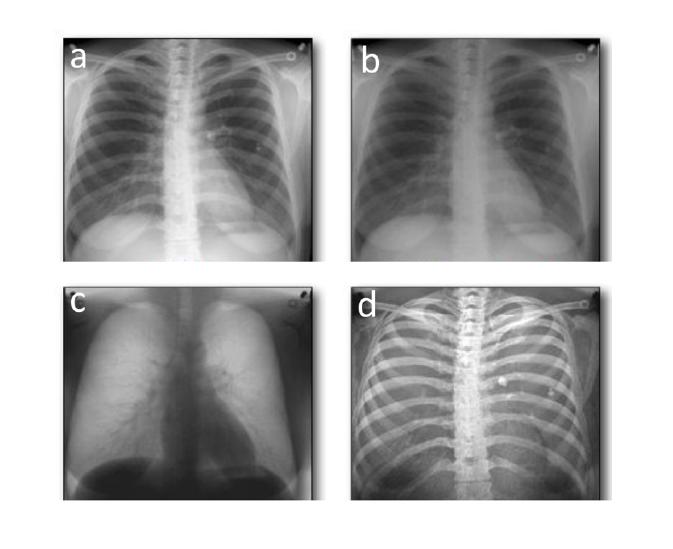Answered step by step
Verified Expert Solution
Question
1 Approved Answer
In general, an X-ray radiograph is a transformation of attenuation coefficient u to image intensity I. Argue why this transformation of attenuation coefficient to


In general, an X-ray radiograph is a transformation of attenuation coefficient u to image intensity I. Argue why this transformation of attenuation coefficient to intensity is not a linear imaging system. X-ray radiography becomes a linear system when transforming to logarithmic intensities: I = I,e-Hx -> In = -ux. The logarithmic intensities are obviously behaving linear. This fact is used in so called dual- energy radiography. An example is shown below, in which two X-rays a) and b) of a chest are shown. This example is very similar to the application in DXA=Dual X-ray Absorptiometry (see class notes). Using picture a) as a reference: how were tube voltage (higher, lower, same?) and tube current (higher, lower, same?) changed for picture (b)? Explain. The logarithmic intensities of pictures a) and b) are combined (summed) using different weighting factors k and kp to form pictures c) and d). We assume a simple model with monoenergetic X-rays with different energies for a) and b) and assume that no Compton scattering takes place. We also assume that the body is only made of tissue (thickness xt and attenuation coefficient H;) and bone (thickness Xp and attenuation coefficient Hb). Express the ratio ka/kp through the attenuation coefficients t and ub in order to obtain pictures c) and d), respectively. b
Step by Step Solution
★★★★★
3.38 Rating (164 Votes )
There are 3 Steps involved in it
Step: 1
Linear att e nu ot ion coefficient 4is a interactions including coherent scad...
Get Instant Access to Expert-Tailored Solutions
See step-by-step solutions with expert insights and AI powered tools for academic success
Step: 2

Step: 3

Ace Your Homework with AI
Get the answers you need in no time with our AI-driven, step-by-step assistance
Get Started


